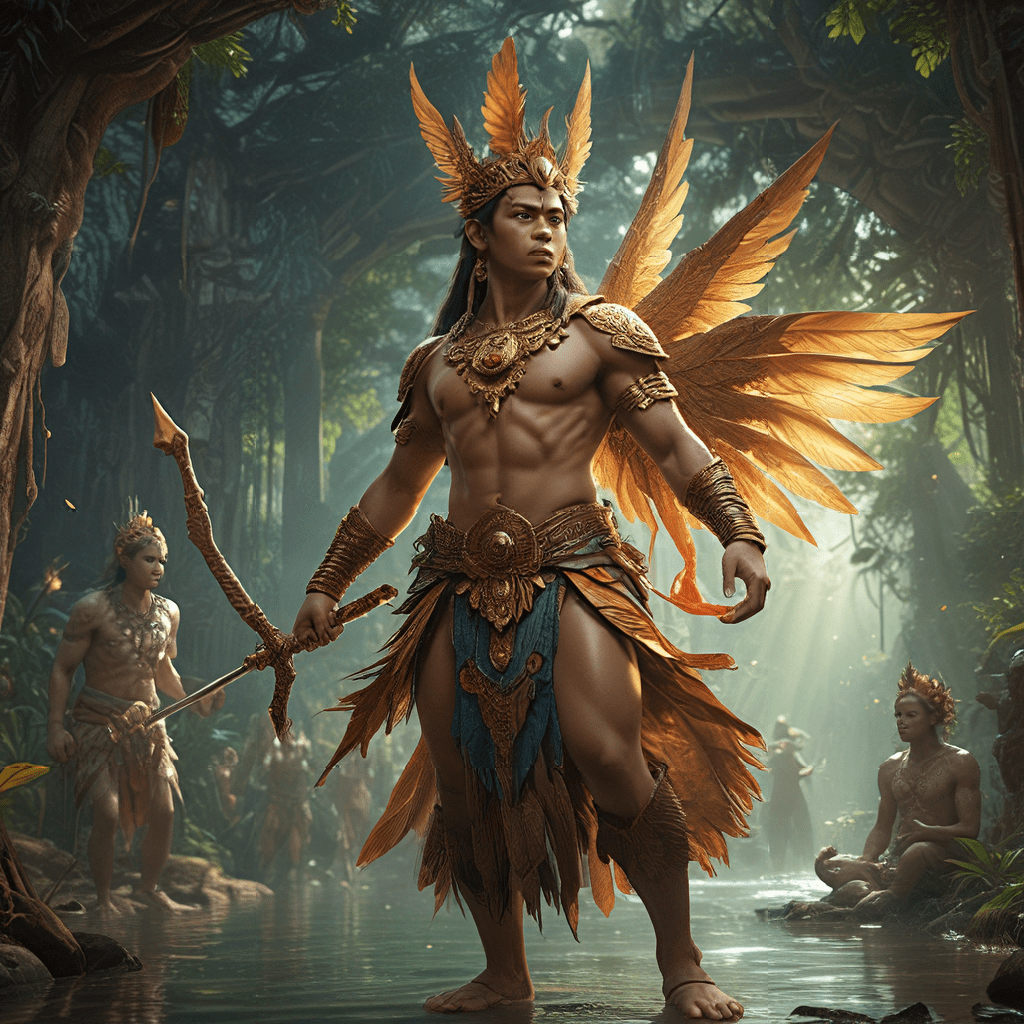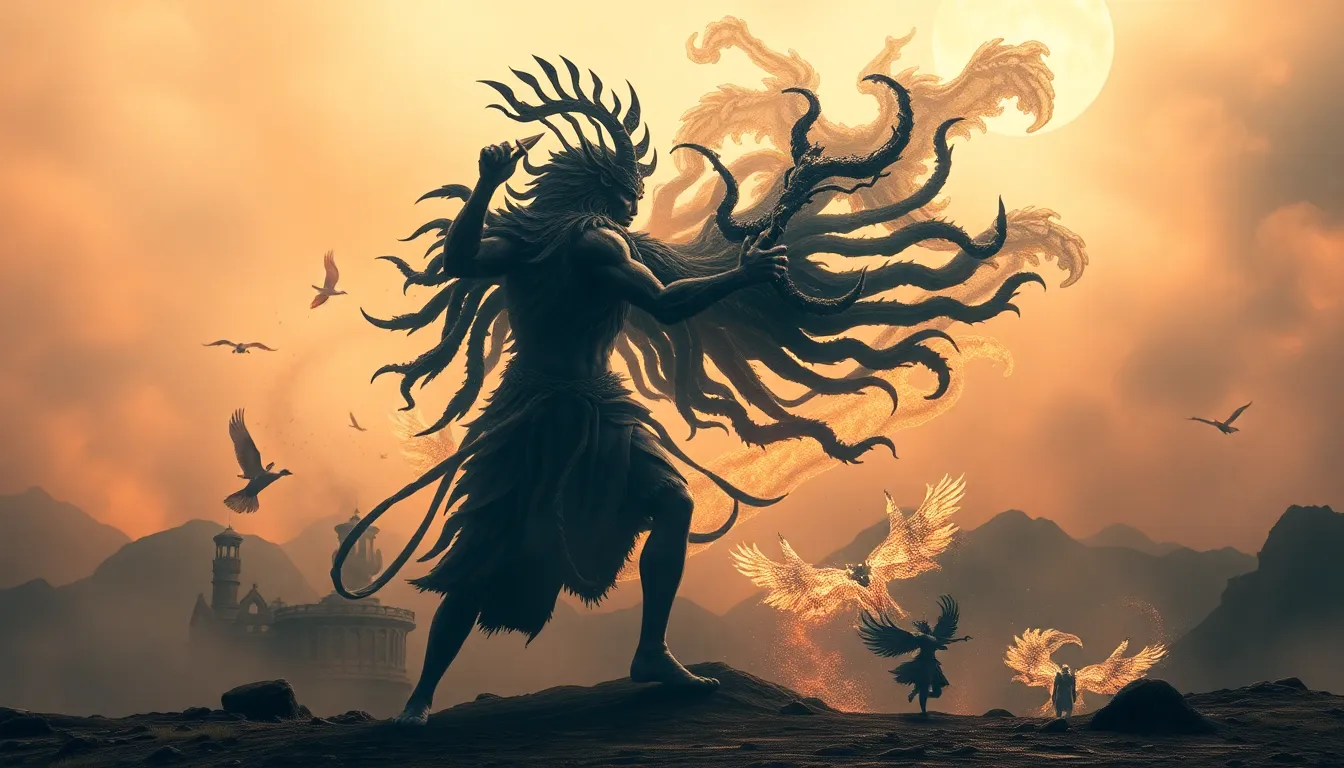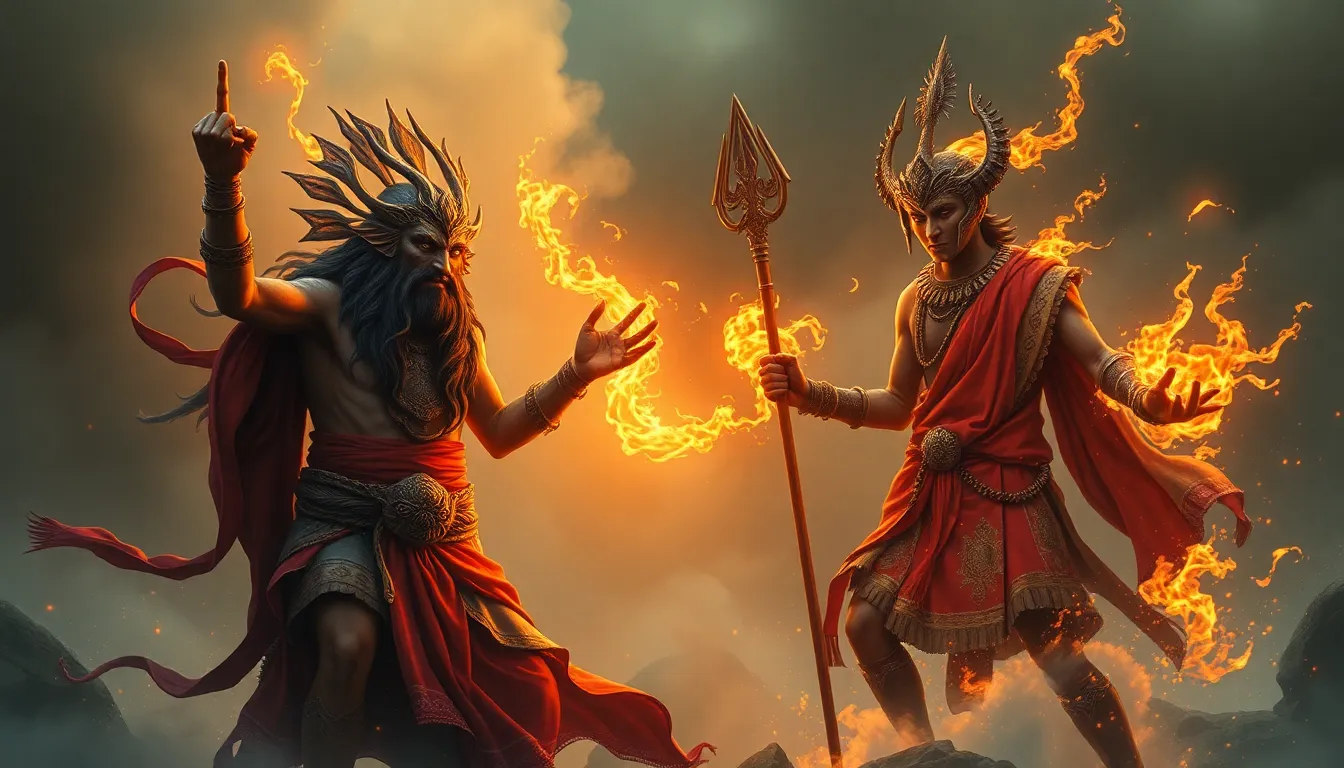A Tapestry of Myth and Magic: The Enchanting Creatures of Filipino Mythology
The Philippines, a vibrant archipelago in Southeast Asia, boasts a rich tapestry of myths and legends woven into its cultural fabric. For centuries, Filipinos have passed down tales of enchanting creatures, spirits, and deities that inhabit their world, shaping their beliefs, values, and worldview. These stories, often rooted in nature and everyday life, offer a glimpse into the deep spiritual connection Filipinos have with their environment and ancestors. Exploring Filipino mythology unveils a diverse and captivating realm of supernatural beings, each with unique characteristics and roles in the intricate tapestry of Filipino folklore.
The Ancient Roots: Origins and Influences Shaping Filipino Mythology
The origins of Filipino mythology can be traced back to the pre-colonial era, when indigenous communities developed their own beliefs and practices. These early Filipinos, known as the "Aeta," "Negrito," and "Indonesian" groups, lived in harmony with nature and revered the spirits that inhabited their surroundings. Their animistic beliefs, recognizing the presence of spirits in all things, formed the foundation of their mythology.
Influences from neighboring cultures, including those from India, China, and Malaysia, further shaped Filipino mythology. Hinduism, Buddhism, and Islam, along with their respective deities and mythical creatures, left their mark on Filipino folklore, adding layers of complexity and diversity. The arrival of the Spanish in the 16th century brought Catholicism and its own set of beliefs and practices, which blended with existing Filipino traditions. This fusion resulted in a unique and multifaceted mythology, where indigenous beliefs and Christian influences coexisted, often intertwined in fascinating ways.
A Realm of Spiritual Beings: Exploring the Variety of Creatures in Filipino Folklore
Filipino mythology is brimming with a wide array of supernatural beings, each playing a distinct role in this vibrant world. Some of these creatures are benevolent, offering protection and guidance to humans, while others are mischievous or even malevolent, capable of causing harm. These mythical beings inhabit various realms – the sky, the earth, and the sea – each representing a different aspect of the natural world.
One of the most recognizable creatures in Filipino mythology is the tikbalang, a mischievous spirit often depicted as a horse with a human head. The tikbalang is known for its playful nature but can also be dangerous, leading travelers astray and causing them to lose their way. Another prominent creature is the kapre, a giant, cigar-smoking tree spirit that resides in forests and guards the trees. The kapre is often portrayed as friendly, but can be aggressive if disturbed.
Beyond these well-known creatures, Filipino mythology encompasses a wide range of spirits and mythical beings. From the aswang, shape-shifting creatures that feed on human flesh, to the manananggal, a vampire-like creature that detaches its upper torso to prey on pregnant women, Filipino mythology is filled with fascinating and sometimes frightening creatures. These stories reflect the anxieties and preoccupations of the people, serving as cautionary tales and reminders of the hidden dangers that lurk in the shadows.
Guardians of the Natural World: The Role of Mythical Creatures in Philippine Ecology
At their core, many Filipino mythical creatures embody the connection between humanity and the natural world. They serve as guardians of the forests, rivers, mountains, and seas, reminding people of the importance of respecting the environment and living in harmony with nature. Stories about these creatures often teach valuable lessons about environmental stewardship and the interconnectedness of all living things.
For example, the diwata, nature spirits that inhabit forests and mountains, are often associated with protecting the environment and ensuring its balance. They are believed to reward those who treat nature with respect and punish those who exploit it. Similarly, the sirenas, beautiful sea creatures that lure sailors to their deaths, represent the danger of the ocean and the need for caution and respect for its power. These stories serve as a reminder that humans are not separate from nature but are an integral part of it.
A Symphony of Spirits: Understanding the Dualistic Nature of Filipino Mythology
Filipino mythology often reflects a dualistic worldview, where good and evil, light and darkness, coexist. This duality is evident in the characters of many mythical creatures, which can be both benevolent and malevolent, depending on their mood or the actions of others. This dynamic interplay of forces emphasizes the importance of balance and the consequences of disrupting natural harmony.
For instance, the engkanto, powerful spirits that live in hidden realms, can be both helpful and harmful. They are known to grant wishes to those who show them respect but can also inflict misfortune on those who disrespect their territory. This dualistic nature allows for a nuanced understanding of the supernatural world, where good and evil are not absolute but are constantly in flux. This duality reflects the complexities of human nature and the constant struggle for balance within ourselves and in the world around us.
Wonders of the Forest and Sea: Examining the Creatures of Nature in Philippine Myth
Filipino mythology is deeply intertwined with the natural world, with many creatures embodying the spirits and forces of the forests, mountains, rivers, and seas. These mythical beings often represent the power and mystery of nature, reminding people of the interconnectedness of all living things.
The kapre, for example, is a giant, cigar-smoking tree spirit who resides in forests and is often depicted as friendly, protecting the trees and the creatures that live within them. The tikbalang, with its human head and horse body, is a mischievous spirit that dwells in forests and is known for leading travelers astray. These creatures serve as reminders of the power and unpredictability of nature. Similarly, duwende, small, mischievous spirits who live beneath trees and in forests, are associated with the hidden wonders and dangers of the natural world.
The sea, too, holds a special place in Filipino mythology. Sirenas, beautiful sea creatures who lure sailors to their deaths, represent the dangerous allure and mystery of the ocean. Mangingisda, spirits associated with fishermen and the sea, are said to protect those who navigate the waters and ensure a bountiful catch. These creatures highlight the respect and reverence Filipinos have for the sea and its powerful forces.
From the Sky to the Earth: Exploring the Mythical Beings of the Air and Land
Filipino mythology extends beyond the natural world, encompassing creatures of the air and land as well. Nuno sa Punso, mischievous spirits that live in mounds of earth, guard the land and can bring both fortune and misfortune. Stories about these creatures often serve as reminders to respect the land and treat it with care.
Manananggal, terrifying creatures who detach their upper torso to prey on pregnant women, represent the dangers that lurk in the shadows, both real and imagined. These creatures embody the fears and anxieties of the people, serving as cautionary tales and reminders of the importance of vigilance and protection.
The skies are also filled with mythical beings, such as the kapre, a bird with a human head that is said to bring bad luck. Tikbalang, a type of winged creature that can fly through the air, represent the freedom and mystery of the skies. These creatures, along with other sky-dwelling beings, showcase the vastness and wonder of the heavens and the interconnectedness of the earth, sky, and sea.
The Power of Belief: The Impact of Filipino Mythology on Culture and Society
Filipino mythology has had a profound impact on Philippine culture and society. It has shaped the beliefs, values, and traditions of the people, providing a shared sense of identity and belonging. These stories are more than just entertainment; they offer guidance, wisdom, and cautionary tales that have been passed down through generations.
Filipino mythology plays a significant role in everyday life. Rituals and practices, such as offering food and prayers to spirits and deities, are still practiced in some communities. Folk songs and dances often feature themes from mythology, preserving and celebrating these stories.
The enduring belief in these mythical creatures has influenced art, literature, and film, creating a rich and vibrant cultural landscape. These stories serve as a powerful reminder of the rich heritage and cultural traditions of the Filipino people and their deep connection to the land and their ancestors.
Modern Interpretations: The Enduring Legacy of Filipino Mythical Creatures in Contemporary Culture
In contemporary culture, Filipino mythical creatures have experienced a resurgence of interest. They have been reinterpreted and reimagined in various forms of media, including film, television, literature, and art. This renewed interest reflects a growing appreciation for Filipino heritage and a desire to connect with the rich cultural traditions of the past.
Tikbalang and kapre have been featured in popular films and television shows, captivating audiences with their unique personalities and stories. Modern artists and writers have incorporated these creatures in their works, breathing new life into these timeless tales.
These reinterpretations demonstrate the enduring impact of Filipino mythology, showcasing the adaptability and relevance of these stories for a modern audience. They serve as a reminder that even in the face of globalization and technological advancements, the essence of Filipino culture remains strong and vibrant.
Unveiling the Mystery: Theories on the Origins and Significance of Filipino Mythical Creatures
The origins of Filipino mythical creatures are shrouded in mystery, but scholars and researchers have proposed various theories to explain their existence and significance. One theory suggests that these creatures were created to explain natural phenomena and the mysteries of the world, like the kapre, who represents the power of nature and the need to respect it.
Another theory suggests that mythical creatures were born out of the need for social control and order. Stories about tikbalang and manananggal serve as cautionary tales, reminding people of the consequences of disobedience and the importance of following social norms.
Some researchers believe that Filipino mythology reflects the animistic beliefs of the indigenous people, recognizing the presence of spirits in all things. This theory explains the widespread belief in spirits and deities that inhabit the natural world and influence the lives of humans.
Whatever their origins, Filipino mythical creatures offer a rich tapestry of stories, beliefs, and cultural traditions that continue to fascinate and captivate people today. They serve as a window into the world of imagination, folklore, and the enduring spirit of Filipino culture.
FAQ
What is Filipino mythology?
Filipino mythology is a collection of stories, legends, and beliefs about supernatural beings, spirits, and deities that have been passed down through generations of Filipinos. It reflects the cultural heritage, values, and worldview of the people.
What are some examples of mythical creatures in Filipino mythology?
Some common examples include the tikbalang, a mischievous spirit with a human head and horse body; the kapre, a giant tree spirit; the aswang, a shape-shifting creature that feeds on human flesh; and the manananggal, a vampire-like creature that detaches its upper torso to prey on pregnant women.
What is the significance of Filipino mythology?
Filipino mythology is significant because it shapes the beliefs, values, and traditions of the people. It provides a shared sense of identity and belonging, and offers guidance, wisdom, and cautionary tales that have been passed down through generations.
How does Filipino mythology relate to the natural world?
Filipino mythology is deeply intertwined with the natural world, with many creatures embodying the spirits and forces of the forests, mountains, rivers, and seas. These mythical beings often represent the power and mystery of nature, reminding people of the interconnectedness of all living things.
How has Filipino mythology impacted contemporary culture?
Filipino mythical creatures have experienced a resurgence of interest in contemporary culture. They have been reinterpreted and reimagined in various forms of media, including film, television, literature, and art. This renewed interest reflects a growing appreciation for Filipino heritage and a desire to connect with the rich cultural traditions of the past.



